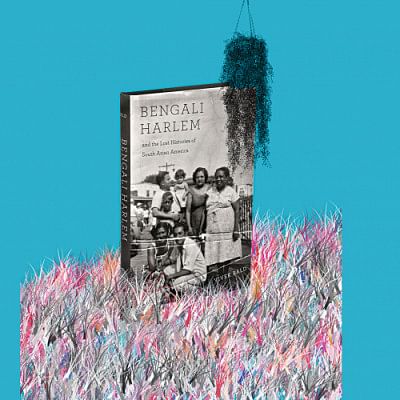Notes on a shared history

In the weeks following George Floyd's death—murdered in Minneapolis by a police officer who knelt on his neck for eight minutes and 46 seconds—the conversation around diversity and inclusion has returned to the forefront, as has the role that persons of colour can play in challenging White supremacy. The events unfolding now merit revisiting author-filmmaker Vivek Bald's Bengali Harlem and the Lost Histories of South Asian America (2013), to remind ourselves why we owe allyship and solidarity to the Black community.
Most scholars track the South Asian influx after The Immigration and Naturalization Act of 1965, a law that undid the Immigration Act of 1917 that barred all immigration to USA from the Asia-Pacific zone. Bald's investigations led him to uncover the forgotten narratives of peddlers and sailors who illegally snuck into the country while the anti-Asian immigration laws were still in place. In order to survive in an unwelcome America, South Asians assimilated and quietly became a part of some of America's most iconic neighbourhoods of colour, from Tremé in New Orleans to Detroit's Black Bottom, from West Baltimore to Harlem.
This book was a truly introspective journey for me. Bald is an expert researcher and story-teller—he critically analyses historic documents, reports and census records, yet no chapter feels flat or 'academic'. Through vignettes of stories and historical assumptions, Bald paints a picture of what life was like for the illegal Bengali salesman. He tells us, for example, of South Asians who negotiated boundaries and travelled into traditionally 'White' areas by performing 'Orientalist caricatures', crafting tales of 'magic' and 'mysticism' to sell their wares—think along the lines of the merchant at the beginning of Disney's 1992 Aladdin. However, ultimately, they were bound to the areas segregated for Blacks and coloured people by Jim Crow laws. As such, much of the Hooghly peddlers' network was based in Tremé, where they married into Creole communities. Their New Orleans native wives helped develop their local knowledge and connections, which in turn helped create space for the Bengali Muslim trader's businesses.
Bald's use of photographs helps us visualise and familiarise ourselves with these characters, and learning their names—Sofur Ally, Abdul Hamid, the many Monduls, and Habib Ullah who inspired the book—keeps us thoroughly invested in their lives. It's a difficult task to effectively share the story of another person, another family, capturing their experiences and voices while being factually accurate. This is Vivek Bald's greatest achievement in Bengali Harlem and the Lost Histories of South Asian America.
Indians, despite their performances and negotiations, lacked the one thing that would truly welcome them into America: the 'right' skin colour. The discriminatory laws in place affected our ancestors just as much as it did the Black community. Bald notes that this binary caused problems for census takers and other officers, as South Asians were considered as dark as the Black nationals, even though their features and hairs shared Caucasian characteristics. In an interview with CityLab, Bald acknowledged, "There was a lot in the lives of this particular group of South Asian immigrants to counteract anti-Blackness—the experience of living and working side-by-side […], of becoming part of African American and Puerto Rican extended families, […] of recognizing shared daily struggles."
As the world amplifies an existing 'us versus them' rhetoric, Bald's book teaches us the need for community-building to support the marginalised. In 1917, and until 1965, the Black community could have chosen to turn in the illegal South Asian immigrants who entered America through the seas, to protect their own at-risk community. Instead, they welcomed our ancestors and fostered safe spaces that paved the way for naturalisation and opening of the borders.
Now, we have a choice—and chance—to return that solidarity and support.
Selima Sara Kabir is a research associate at the BRAC James P Grant School of Public Health, where she combines her love for reading, writing, and anthropological research.

 For all latest news, follow The Daily Star's Google News channel.
For all latest news, follow The Daily Star's Google News channel. 



Comments